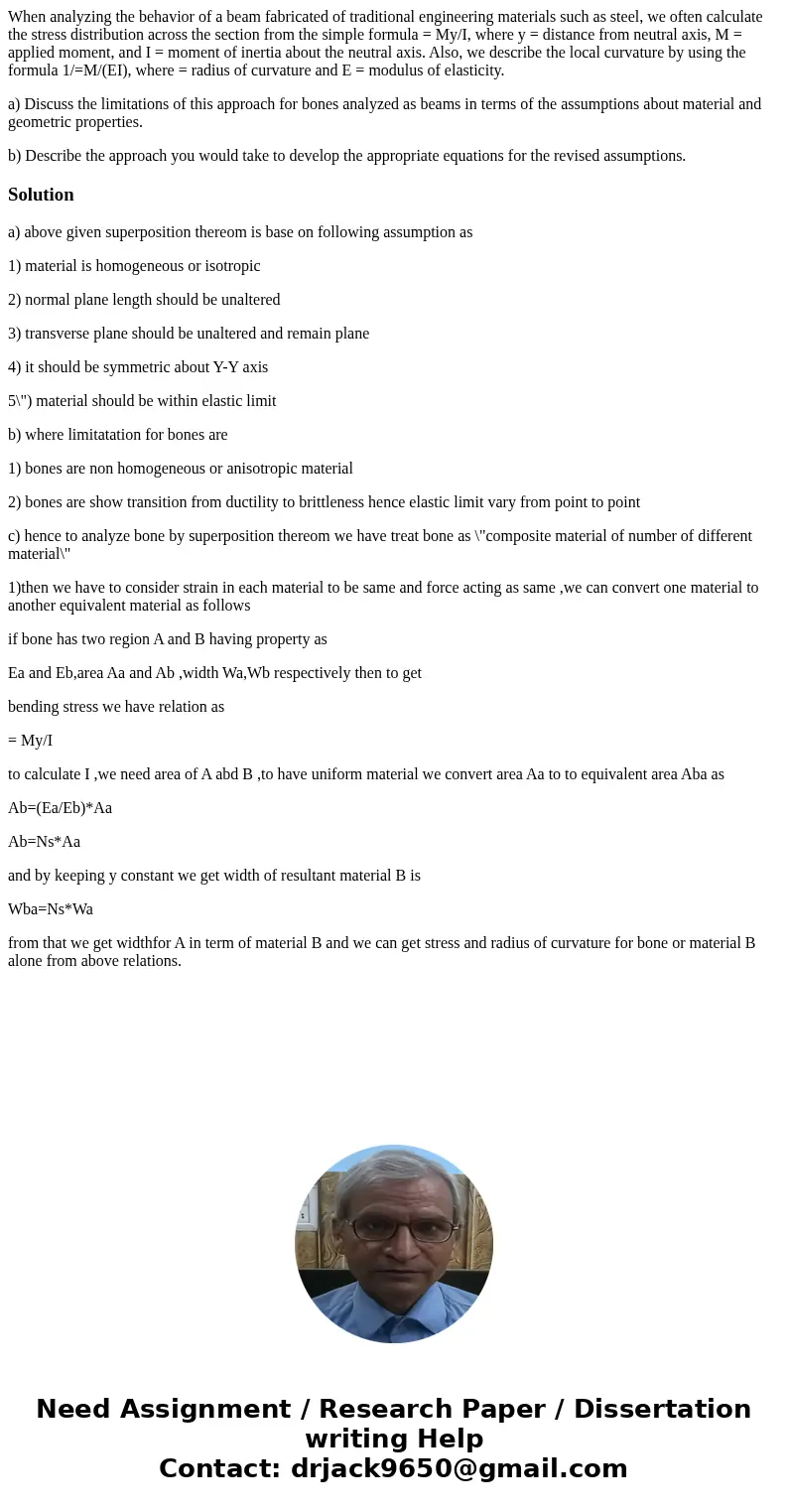When analyzing the behavior of a beam fabricated of traditio
When analyzing the behavior of a beam fabricated of traditional engineering materials such as steel, we often calculate the stress distribution across the section from the simple formula = My/I, where y = distance from neutral axis, M = applied moment, and I = moment of inertia about the neutral axis. Also, we describe the local curvature by using the formula 1/=M/(EI), where = radius of curvature and E = modulus of elasticity.
a) Discuss the limitations of this approach for bones analyzed as beams in terms of the assumptions about material and geometric properties.
b) Describe the approach you would take to develop the appropriate equations for the revised assumptions.
Solution
a) above given superposition thereom is base on following assumption as
1) material is homogeneous or isotropic
2) normal plane length should be unaltered
3) transverse plane should be unaltered and remain plane
4) it should be symmetric about Y-Y axis
5\") material should be within elastic limit
b) where limitatation for bones are
1) bones are non homogeneous or anisotropic material
2) bones are show transition from ductility to brittleness hence elastic limit vary from point to point
c) hence to analyze bone by superposition thereom we have treat bone as \"composite material of number of different material\"
1)then we have to consider strain in each material to be same and force acting as same ,we can convert one material to another equivalent material as follows
if bone has two region A and B having property as
Ea and Eb,area Aa and Ab ,width Wa,Wb respectively then to get
bending stress we have relation as
= My/I
to calculate I ,we need area of A abd B ,to have uniform material we convert area Aa to to equivalent area Aba as
Ab=(Ea/Eb)*Aa
Ab=Ns*Aa
and by keeping y constant we get width of resultant material B is
Wba=Ns*Wa
from that we get widthfor A in term of material B and we can get stress and radius of curvature for bone or material B alone from above relations.

 Homework Sourse
Homework Sourse